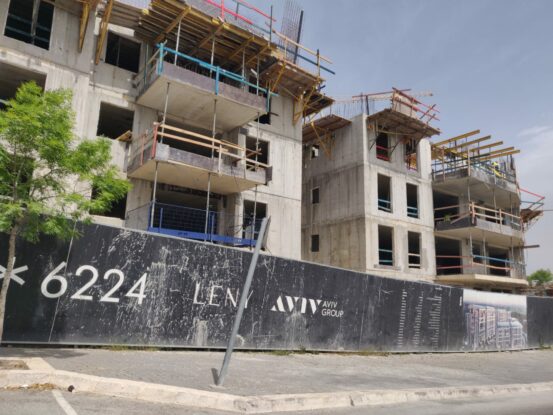Your real estate asset in Israel may be recorded to be of varying sizes, depending on the assessment institution and the method they might choose to apply. The size of a particular apartment may be different in the building construction permit, the owners’ land registration in “Tabu” (Israeli Land Registry), and the local municipality’s data for calculation of municipal tax. The range of different methods creates chaos, excess bureaucracy, and sometimes is even used by building contractors to the detriment of property buyers. Recently, the Israeli government established a committee whose aim is to set a uniform mechanism for the market.
Today, the owner of a home in Israel may well find it difficult to answer a basic question – what is the size of your apartment? This is because the various planning and construction bodies each use different methods of measurement. Architects and planning committees follow the Planning and Building Regulations; local authorities use a different method for determining municipal tax rates, and the method used to calculate the size of a property for registration at the Land Registry may differ significantly from both of these.
Uniform mechanism for measuring apartment size
In order to standardize practice, the government established a special committee to formulate a uniform mechanism that will apply in all cases – including the municipal tax registration, the construction permit, and the Land Registry. The committee began work a few weeks ago and its members include representatives from the Justice Ministry, the Planning Administration, and the Housing and Construction Ministry.
As part of its work, the committee will have to provide answers to measurement and dimension issues which until now have not been formally determined, such as – should the area of the balcony, parking space or storage room be included in the built area of the property, and if so, how should this be done? Another question relates to common areas jointly owned by all the residents of a building, which according to some methods are included in the “gross” area of the apartment. The committee will need to decide if the inclusion of common areas is the correct approach.
Relevance in urban renewal projects
The range of different methods creates many issues on a regular basis. For example, in urban renewal projects – where the owners of the original apartments receive new, larger apartments – the determination of the size of the old apartments in the building slated for reconstruction, is critical for the owners of the apartments. This is because the size of the new apartment to be received is relative to the size of the old apartment (the owner of a 100 sq.m. apartment, for example, will receive a larger new apartment than the owner of an 80 sq.m. apartment). The use of different methods can cause misunderstanding at best, and in the worst case may even be manipulated by the parties to an agreement. There have even been some extreme cases where owners received a new apartment which was actually smaller than their original apartment because the building contractor chose the method of calculation which best served their own interests.
This is only one example of the many issues that may arise by using different methods. Other examples are purchasers of apartments “on paper” from the builder, who measure the property after receiving the keys and discover that the size promised to them by the builder does not match the size of the finished apartment, and municipal tax calculations based on methods of measurement which differ from municipality to municipality. This is unfair and is not properly explained to the local taxpayers.
Lengthy and complex land registration process
The main motivation for establishing the committee was a report published in December 2020 by the Ministry of Justice, which dealt with one of the most lengthy and complex processes in Israel – registration of property in the Israel Land Registry. This process, which in theory should be quick and simple, in practice sometimes takes up to ten years or even more, after taking ownership of the property.
The 62-page report was written by a team headed by the Deputy Attorney General, Adv. Erez Kaminitz. It describes the use of different calculation methods as one of the main obstacles to streamlining the registration process. The report also notes that lack of uniform data means that sometimes regional Land Registry offices will register different measurements for apartments that have identical characteristics.



